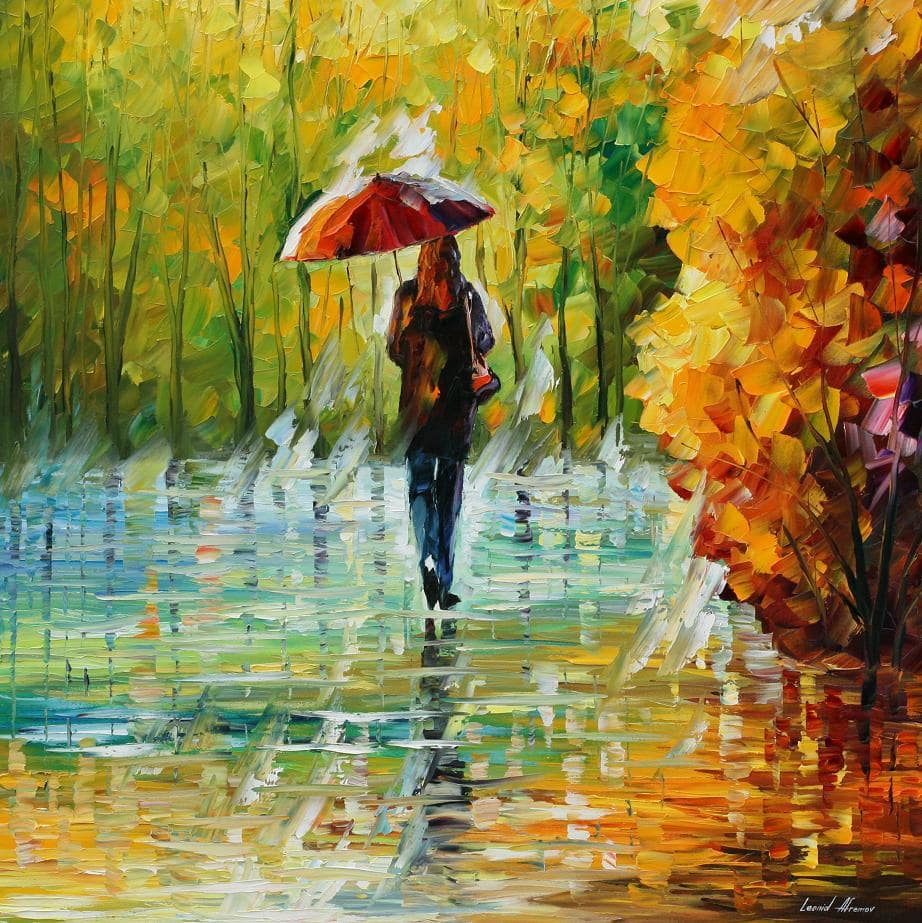Creative Design Inspirations with Oil Paintings for Sale
Wiki Article
Discovering Everything About Oil Paints: An Overview to Comprehending Their Beauty and Worth
Oil paints have astounded audiences for centuries, offering a peek into the imaginative proficiency of various ages. Their abundant background is linked with cutting-edge strategies and profound psychological expression. Comprehending the products and methods behind these art work can boost recognition. Additionally, the market for oil paintings presents possibilities for collection agencies and financiers alike. As one explores this remarkable world, the inquiry develops: what makes an oil paint absolutely important?The Background of Oil Painting: A Journey Via Time
Oil paint has origins that date back to ancient times, it genuinely grew during the Renaissance, when artists uncovered its adaptability and rich color possibility. Early examples can be mapped to the 7th century, with techniques progressing especially throughout cultures. The medium ended up being famous in Northern Europe in the 15th century, especially through the works of musicians like Jan van Eyck, who pioneered its use for in-depth realism and vibrant tones. This period marked a departure from tempera paints, allowing for better deepness and structure. As oil paint spread, it influenced many artists, resulting in masterpieces by prominent numbers such as Leonardo da Vinci and Rembrandt. The medium's heritage continues, shaping the art globe well into modern times.Understanding Oil Paints: Products and Techniques
As musicians check out the world of oil paints, they run into a diverse array of products and techniques that specify this medium. The main components of oil paint consist of pigments, which provide color, and drying oils, such as linseed, that bind the pigments and help with application. Various additives can modify the paint's structure and drying out time, improving convenience. Techniques like glazing, where clear layers are developed up, and impasto, which entails applying thick paint, enable different aesthetic effects. In addition, the usage of brushes, palette knives, and even fingers can develop distinct textures and finishes. Understanding these strategies and materials enables musicians to fully reveal their creativity and achieve the wanted effect in their art work.The Duty of Color in Oil Paints
Color plays a critical function in oil paintings, influencing both visual allure and psychological resonance. Recognizing color theory essentials, consisting of the connections in between hues, can boost a musician's capability to convey mood and ambience. Furthermore, grasping shade mixing techniques allows for greater deepness and splendor in a paint's scheme.

Color Concept Basics
Understanding shade concept is essential for musicians dealing with oil paints, as it creates the foundation for developing harmonious and visually interesting structures. Shade concept includes the research of how colors engage, the shade wheel, and the connections between key, second, and tertiary shades. Musicians use complementary colors to boost contrasts and produce prime focus, while comparable colors promote unity and cohesiveness within a piece. Additionally, the ideas of awesome and warm shades affect the perception of deepness and room in a paint. Grasping these principles permits musicians to control shade efficiently, directing the customer's eye and communicating their desired message. Proficiency of color concept inevitably enhances a musician's capacity to convey emotions and ideas via their job.
Emotional Effect of Color
The psychological impact of shade in oil paintings plays a vital role in how viewers perceive and attach with artwork. Shades evoke particular sensations and moods, influencing the audience's mood. As an example, warm shades like reds and oranges can develop a sense of warmth and energy, while great tones such as blues and environment-friendlies frequently stimulate calmness or self-questioning. Artists purposefully select shade schemes to enhance narrative elements, leading the target market's emotional trip. The saturation and comparison of colors additionally intensify these results, attracting interest and developing focus. Eventually, the interplay of colors in oil paints not just enhances their visual appeal yet likewise works as a powerful tool for psychological expression, enriching the visitor's experience and analysis.Color Mixing Techniques
While several elements of oil paint add to the overall composition, mastering color blending methods is vital for achieving wanted effects and deepness. Shade blending can be come close to with numerous methods, including the additive and subtractive processes. Additive blending entails combining colors of light, while subtractive blending relies upon pigments, where colors blend to create brand-new shades. Musicians typically utilize a minimal combination to produce unified works, comprehending the partnerships between main, second, and tertiary shades. Techniques such as glazing and scumbling further boost deepness and brightness. By skillfully mixing shades, a musician can evoke feelings, develop prime focus, and accomplish a sense of realistic look, eventually elevating the painting's aesthetic and psychological impact.Famous Oil Painters and Their Iconic Functions

Well known for their mastery of shade and technique, oil painters have created a few of the most celebrated artworks in history. Popular musicians like Vincent van Gogh captivated audiences with his stirring brushwork in "Starry Night," while Claude Monet's "Impression, Sunrise" laid the foundation for Impressionism. Leonardo da Vinci's "Mona Lisa" remains an enduring icon of imaginative brilliant, showcasing his skill more info in capturing human expression. On the other hand, Rembrandt's "The Night Watch" highlights his innovative use light and darkness. Other noteworthy figures consist of Pablo Picasso, who changed modern art with his vibrant testing in jobs like "Les Demoiselles d'Avignon," and Georgia O'Keeffe, whose vivid depictions of landscapes and flowers assisted define American innovation. Each musician's one-of-a-kind style contributed substantially to the oil paint landscape.
Exactly how to Evaluate the High Quality of an Oil Paint
Assessing the quality of an oil painting entails a careful assessment of craftsmanship techniques, along with an evaluation of shade and structure. Observing brushwork, layering, and the application of paint can reveal the artist's skill level. In addition, the interaction of colors and the general arrangement of components contribute considerably to the paint's visual value.Analyzing Workmanship Methods
A precise analysis of craftsmanship strategies is crucial for identifying the top quality of an oil painting. Critics need to first examine the application of paint; thick, distinctive brushstrokes may recommend a competent hand, while extremely uniform applications can indicate an absence of deepness. oil paintings for sale. The layering strategy is likewise vital; the presence of glazes and varied thickness can boost brightness and intricacy. Furthermore, the high quality of the products made use of, such as the canvas and pigments, plays a significant function in toughness and overall visual. Focus to information in aspects like sides and shifts between colors reflects the artist's commitment to their craft. Ultimately, these techniques add to the painting's psychological effect and market price, acting as signs of the musician's skill and intentEvaluating Shade and Composition
While evaluating the high quality of an oil painting, one must concentrate on the interaction of shade and structure, as these aspects are fundamental to the artwork's overall influence. Shade selections can develop and evoke feelings mood; consequently, the artist's combination should be analyzed for harmony and comparison. A well-balanced composition directs the visitor's eye and develops a sense of unity. Musicians often use strategies like the rule of thirds or leading lines to boost aesthetic interest. Additionally, making use of light and shadow can include deepness, improving the three-dimensionality of the painting. Inevitably, a successful oil paint marries shade and make-up, engaging the viewer and welcoming a deeper recognition of the musician's vision and technique.Taking care of and Preserving Oil Paintings
Proper care and conservation of oil paintings is vital for maintaining their integrity and durability. To safeguard these art work, it is crucial to present them far from straight sunlight, which can trigger fading and discoloration. Keeping a secure atmosphere with regulated temperature and moisture additional help in preventing damages. Cleansing must be done gently using a soft, dry cloth, preventing any type of severe chemicals that can harm the paint or varnish. Normal assessments for indications of damage, such as flaking or cracking, are a good idea. When moving or keeping oil paints, appropriate extra padding and framework are essential to prevent physical damage. Inevitably, persistent care adds to the visual charm and value of oil paintings in time.The Market for Oil Paints: Investing and gathering
Recognizing the marketplace characteristics for oil paintings is necessary for financiers and enthusiasts alike. The worth of these art work is influenced by numerous factors, including the artist's online reputation, historic relevance, and present trends. Collectors typically look for items that reverberate personally while taking into consideration prospective appreciation in worth. Auctions and galleries work as key places for buying and marketing, with rates rising and fall based upon need and rarity. Purchasing oil paintings needs study into the market, in addition to an understanding of credibility and provenance. Furthermore, emerging artists may offer chances for considerable returns, while developed names can command high rates. Generally, a calculated approach to accumulating can yield both aesthetic enjoyment and economic benefits.
Often Asked Inquiries
What Are the Environmental Effects of Oil Painting Materials?
The ecological impacts of oil paint materials consist of the launch of unpredictable natural compounds (VOCs), unsafe waste generation, and resource extraction for pigments. These elements add to pollution and eco-friendly deterioration, raising problems amongst environmentally conscious artists and customers.Just How Do Different Canvases Impact Oil Painting Outcomes?
Various canvases affect oil paint results significantly. Surface area, absorbency, and structure quality can alter paint application, drying times, and color vibrancy. Musicians frequently choose details canvases to achieve wanted results and improve their creative expression.Can Oil Paintings Be Recovered if Harmed?
If damaged, Oil paints can undoubtedly be brought back. Professional conservators use different techniques to fix tears, clean surfaces, and address discoloration, making sure that the art work maintains its original beauty and worth for future generations.What Are the Indicators of an Original Oil Paint?
The indicators of an original oil paint include visible brush strokes, appearance variants, and an unequal canvas weave (oil paintings for sale). Furthermore, credibility may be confirmed through provenance, signatures, and the visibility of a varnish layer special to oil toolsHow Has Technology Influenced Modern Oil Paint Techniques?
Innovation has considerably affected modern-day oil paint techniques by presenting digital tools for preparation, boosted materials for texture and longevity, and on the internet platforms for marketing and sharing art, thereby expanding musicians' innovative opportunities and target market reach. Oil painting has roots that date back to ancient times, it really grew throughout the Renaissance, when musicians found its flexibility and abundant color capacity. The psychological influence of shade in oil paintings plays an important function in exactly how customers perceive and attach with artwork. While many aspects of oil painting contribute to the general composition, grasping color blending methods is important for accomplishing preferred impacts and deepness. Reviewing the top quality of an oil painting entails a careful evaluation of workmanship strategies, as well as an analysis of shade and structure. While examining the quality of an oil painting, one must focus on the interaction of color and composition, as these aspects are basic to the artwork's general impact.Report this wiki page